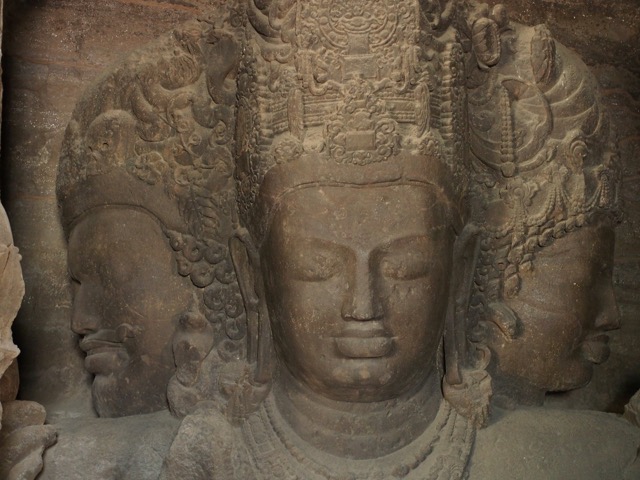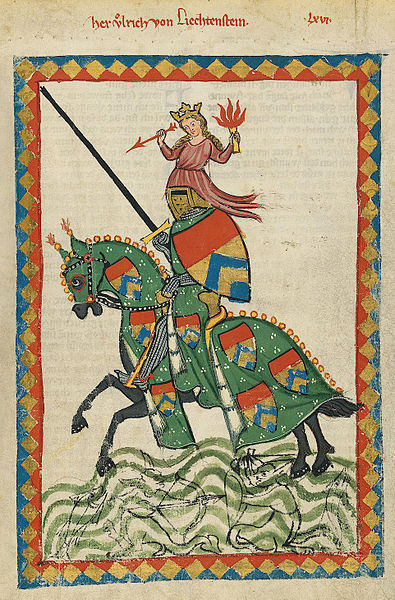Traveling Beyond: Egypt Explorations with New Acropolis India Part 2 – The Egyptian Temple as a Metaphor for Life
Article By Rahil Mehta
 Traveling Beyond: Explorations with New Acropolis India, is active travel for the aspiring philosopher; to come closer to the rich human heritage of lands and cultures across the globe. The philosophical way encourages us to come closer to what lies “beyond” – the invisible causes of what we observe, such that we may recognize the underlying unity that links humanity. This article is Part II in our learnings from our travel to Egypt. It is my reflection on the Egyptian Temple and its enigmatic connection with the meaning of human life, inspired by what we encountered as a group during the exploration.
Traveling Beyond: Explorations with New Acropolis India, is active travel for the aspiring philosopher; to come closer to the rich human heritage of lands and cultures across the globe. The philosophical way encourages us to come closer to what lies “beyond” – the invisible causes of what we observe, such that we may recognize the underlying unity that links humanity. This article is Part II in our learnings from our travel to Egypt. It is my reflection on the Egyptian Temple and its enigmatic connection with the meaning of human life, inspired by what we encountered as a group during the exploration.
It is said that in the ancient Egyptian civilization everything was imbued with meaning. Each aspect played its part within the whole, and this resulted in a harmony where elements were intimately connected with each other.
This is beautifully encapsulated in the idea called “neter”. This word means both sacred and meaning, implying – that which plays its role and fulfils its purpose is sacred. For example, the river Nile, when it overflowed and brought the life-giving fertile soil to the land, was considered “neter” or as fulfilling its purpose. The pharaoh fulfilling his role as the spiritual king and representative of the divine, was “neter”. This idea spurred a reflection through the travel: what does it mean for us human beings to recognize our purpose and bring meaning to our lives? To be “neter”…
The First “Beyond”
The setting of many Egyptian temples is the clamour of vendors peddling their wares, and the noisiness of a busy cityscape; a picture of the transitory haze where it is so easy to lose our attention to the real essence. In a stark contrast to this, the temples with their massive gates and imposing elements exude silence and eternality. They are a symbol of enduring for thousands of years, witness to the cycles of human civilization.
This juxtaposition between the transitory or mundane (the busy streets) and the resilient or elevated, (the temple) can easily be missed by the casual visitor, but for the philosopher who looks deeper, it is apparent that here is a mystery to unravel.
This contrast serves to underline the idea that the temple is a bridge between the human being and divinity or the sacred. While the temple stands generously offering its service, human civilizations pass – in a more or less frenzied pace, reaching varying heights of inner depth, and falling yet again to the decline of materialism.
This could be a call to observe that this separation between the transitory and the eternal also exists within us, and to search for the meaning of the temple is to search within, for that which is resilient, eternal and stable. This is the first “beyond what meets the eye”. Our successive visits to the various temples made this assertion more alive. Entering the temple then is truly to enter a sacred space, if we raise our gaze to look higher and deeper.
The Temple as a series of Transitions
Taking inspiration from a symbol of steps, related to the Egyptian goddess Isis , we can observe the journey of life as a series of steps of a staircase. To take a step, is to face an internal challenge, grow from this challenge, discover a deeper dimension and rise up, only to encounter the next step. At each step up, we leave a step behind, and yet each step is a necessary experience to move forward in the quest for a meaningful life.
Like the ascending stairs of Isis, the Egyptian temple also has different sections, each with its characteristic features and its unique purpose. Traversing the temple, the transition between the sections seemed intentionally pronounced and significant.
If the temple is a bridge to the eternal for the human being, successive parts of the temple would correspond to advancing levels of consciousness, and the temple as a whole holding a key to the development of inner human potential.
As each stage progressively correlates with a deeper experience and integration with life, it would also correlate with more responsibility and rigour. Only the one who needed to enter and was able, could access each part.
The Horizon
The Egyptian temple starts with an avenue or a path which is often lined with a row of Sphinxes on either side, usually perpendicular to the river Nile. Looking toward the temple from the avenue, we see that the temple is set at the horizon.
The horizon is symbolic of mystery – a dimensionless line of encounter between the land and sky, the mundane and the sacred. Do we recognize that we human beings are at such a confluence? The need to grow and discover ourselves and the fear of change arising from it, both lie within us. The call is to embrace and balance this dual nature, and move forward toward the horizon.
How do we do this? The temple at the horizon also shows a path toward it. This path appears to converge to a point at the horizon and this illusive point is the goal, beckoning us to embark upon a journey through the temple.
The Pylon
Walking down the avenue brings us to the huge facade with an entrance in the center. And what a sight it is! The entrance has a huge obelisk and a seated pharaoh on either side. The obelisk at its peak seems to connect to the energy of the celestial, and the pharaoh serves as a protector and guard.
Entering the temple is a moment of transition. To go past the gate is to leave the casual behind. It is as if to embark on an adventure with a sense of purpose, with a determination to move toward the goal while shedding some old tendencies that we know hold us back. It is as though the pharaoh challenges the one who wishes to enter and to pass him is to respond from within, with clarity and conviction.
The Open Courtyard
Passing the entrance of the temple we first encounter the open courtyard. Today a tourist can walk right through all the way to the innermost part, however we learn that it was not always so.
The open courtyard was a place where every Egyptian could go. It represented the day-to-day life. Entering the temple with the right orientation, we can experience the meaning – that the Open Courtyard is a place to encounter the sacred in the daily life. To strengthen the decision to grow and elevate in daily life, to recognize the challenges and be committed to grow from these challenges.
This also relates the idea of purification and renewal, not only physically and energetically, but also in our clarity of what are we a part of, what are we truly looking for. This stage is already challenging in our times today.
The Hypostile Hall
Crossing the Open Patio we come to the hall of pillars. Carved into the gate to this hall is the Amon – Ra or the “winged sun disk” a symbol of the human soul ascending beyond its material limitations. Its stately presence presides over this transition to a stage with more depth and meaning. This hall has a ceiling which is symbolic of the sky and is replete with intricately carved symbols related to the deity of the temple. Grand pillars throughout the hall connect the floor to ceiling, the earth and sky. And skylights in the ceiling are said to be placed with accurate calculations to highlight different parts of the hall corresponding with the solar cycle through the year. To us, it created a mysterious play of light within the hall. The pillars where they touch the ceiling (sky) are crowned with open and closed forms of lotus and papyrus flowers.
This hall called the “hypostile hall” gives the feeling of an encounter with something much more subtle, invisible and mysterious. It appears as a stage between the earth and the sky, or a garden of flowers growing in the marshes of the Nile and reaching for the sky.
At the far end of the hypostile hall is a door often small in size leading to a sacred place, the inner sanctum. Hence the hypostile hall is a stage of transition separating the tangible and intangible worlds, probably meant for the select few who were ready to work with its mysterious nature.
The Holy of the Holies
Entering through the small door, we reach the inner most part of the temple. The guides call this “The Holy of the Holies”. This is where the deity is encountered. We can imagine that in ancient times, access to this sacred area was reserved for the Pharaoh and the Priest.
The deity then was not the subject of belief and blind faith, rather it represented a force of life. This force represented a divine quality that the Pharaoh must imbibe in order lead and serve Egypt and its citizens.
An intriguing feature was the statue of the God in a miniature boat. Legend says that during certain ceremonies and special moments, the boat would traverse the land of Egypt. We can imagine that the deity as a force of life, moving through the land, allowed a rejuvenation of the connect with this life-force for the ancient Egyptians.
The Journey through the Temple – the human journey
As we walk through the temple and toward the horizon, the ceiling progressively lowers while the floor rises gently upward. We move from the tall pylons and the open courtyard to the profound, humbling, smaller inner sanctuary. This can be viewed as an invitation to deepen how we live, to grow through an inward search, and rise up internally… It is to dare to take bold steps towards unity.
Each stage of the temple, as in life, is indispensable, and whichever stage corresponds to us, wherever we are, is the right place for us. At each stage of life the connect with the deeper, stable and eternal axis of life is possible and necessary. To make and strengthen this connection does not depend on our circumstances, but rather on our own decision. This is our role.
Traversing the avenue of the sphinx, and facing the Pylon, we cannot know the sanctum. This is how it probably was for a majority of the population, who may never visit the inner sanctum during their lifetime. But maybe this was not an impediment to live life fully. Within each sacred stage, lay the key for advancement. And this is something to ponder over in our lives. As long as we dare to move steadfastly upward and forward from our present context, the next step, what is “beyond” will reveal itself.
The ancient name for Egypt was Khem, related to Alchemy and transformation. As our teachers tirelessly remind us, what we seek lies within each one of us. We should be a force that ushers in this transformation towards unity and connectedness. I believe the magical land of Egypt and its temples can be a catalyst, if the search is sincere and authentic.
Image Credits: Image Courtesy New Acropolis
The entity posting this article assumes the responsibility that images used in this article have the requisite permissionsImage References
Image Courtesy New Acropolis
Read the original article on https://theacropolitan.in/2024/06/30/travelling-beyond-egypt-explorations-with-new-acropolis-india-part-2-the-egyptian-temple-as-a-metaphor-for-life/
Permissions required for the publishing of this article have been obtained




What do you think?